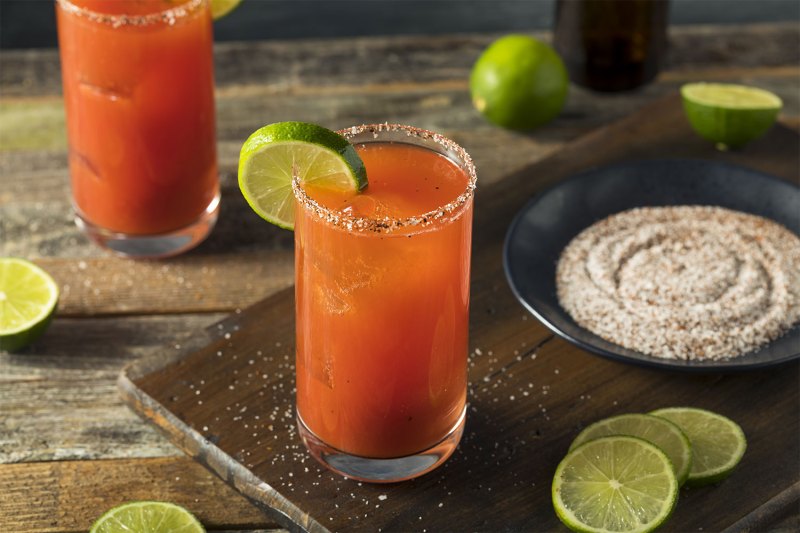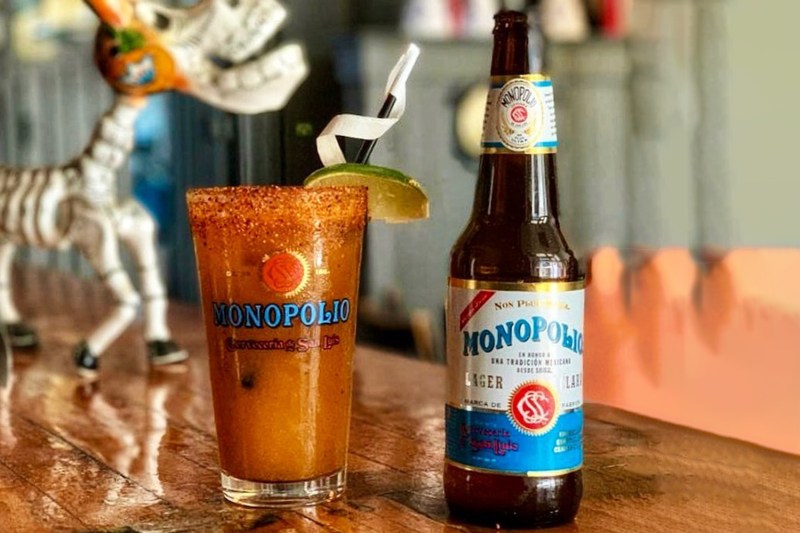
Unforgettable brunches are usually determined by bottomless cocktails, good friends, tasty nibbles, and a slight hangover. And when you’ve had too much fun the night before and feel like your head is exploding the next morning from trying out too many cocktail recipes, the Michelada is the savory beer cocktail that will undoubtedly get rid of your hangover without feeling like you’re really having the hair of the dog. It is a recovery drink that will bring you to life and soften the weight of the many cocktails that’s still in your system.
It falls into the savory cocktail category and is similar to the Bloody Mary; but instead of using the spirituous vodka, the Michelada contains spice, acid, and some alcohol—in this case, beer. We chatted with Alex Valencia, a bartender at La Contenta in New York City, about the Mexican drink.
Related Guides
How to Make the Michelada

If you find yourself brunching at home, crafting a few Micheladas is as simple as it gets. Valencia stresses that the salt, lime, and a quality hot sauce (such as Valentin Salsa Picante) are essential for a balanced and revitalizing Michelada. Salt is one of the most daunting ingredients for some drinkers, but Valencia ensures that it balances the mixture and ties together the spice, citrus, and beer perfectly.
To make the Michelada, whether you need it for its hangover-healing properties, or just for its flavor, here is the perfect recipe to try, according to Valencia, who adds a small dose of orange juice for body and balance.
Ingredients:
- 1 ounce hot sauce
- 1 ounce lime juice
- .5 ounce orange juice
- 2 bar spoons fine sea salt
- Beer, to top
- Tajín rim, for garnish
Method:
- Rim a pint glass, or mug, with the Tajín.
- Add the hot sauce, lime, salt, and orange juice to the glass, then stir the ingredients until most of the salt is dissolved.
- Add ice, then top with beer and lightly mix to integrate the ingredients, and enjoy.
History of Michelada
In Mexico, popular tourist-filled cities such as Mexico City, Micheladas can be found everywhere from fashionable cocktail bars to casual street vendors—each version differs from the last as it can be garnished with an array of ingredients from shrimp and bacon, to chilis and other vegetables.
Although grain beer is one of the most consumed beverages in Mexico, the Michelada has only recently risen to popularity within the last 15 years in America due to the commercialization of drinks such as Budweiser’s “Chelada”
“[The Michelada] makes an excellent brunch drink because it is light on alcohol, savory, and the spiciness wakes up all of your senses,”
Valencia, who grew up in Mexico, says that the drink has been popular ever since he was a child and dates back to the early-to-mid 20th century.
Ordering a beer sola (on its own) is typically the preference amongst most locals as the domestic and microbrew options are virtually endless with Mexico’s burgeoning beer culture, but cervezas preparadas (beers prepared) have their place as well, especially at Mexican carnivals and celebrations, Valencia notes.
What is a Chelada?
In addition to the well-known Michelada, there is a variety of similar beer cocktails that each have their slight differences and are worth noting as well. First, there is the Chelada made with a beer (typically a lager), lime, and salt; then there is the Michelada, which is one step up from the former by adding hot sauce to the mix and a Tajín rim; the Leon Rojo is an evolution of the Michelada which adds a savory component such as tomato juice, or Clamato (tomato juice with clam broth and spices); and, lastly, there is the Cubana which ditches the tomato juice for Worcestershire sauce (aka salsa Inglesa, or English sauce). Some recipes are more evolved than others, but the Michelada reigns supreme because of its simplicity and quality.



